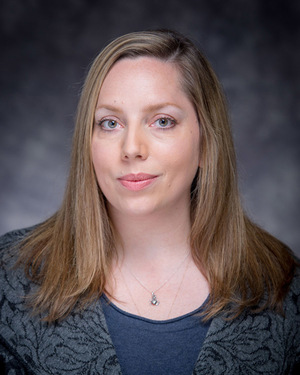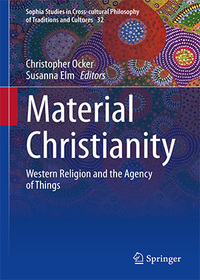
- University of California, Berkeley
- Assistant Professor
- Academic Concentration: European Medieval and Early Modern Art, Architecture, Visual Culture, and Literature in the Mediterranean
- Residential Fellow (2017-2018)
- "Giotto’s Triumph: The Arena Chapel and the First Beginning of the Renaissance"
Henrike C. Lange holds a joint appointment in the University of California, Berkeley’s Departments of Italian Studies and History of Art. She specializes in European medieval and early modern art, architecture, visual culture, and literature in relation to the Mediterranean. She has a second area of expertise in nineteenth and twentieth century historiography, literature, and art in Europe and the United States. Her scholarship focuses on questions of perspective, narrative, medium, materiality, and spirituality in specific historical contexts. She is currently working on a monograph on Giotto’s Scrovegni Chapel and the Roman Jubilee of 1300.
Professor Lange is the author of forthcoming book chapters and journal essays on relief effects in Donatello and Mantegna, funerary portraiture in the Italian Trecento, Cimabue and the challenge of materiality in Christian art, Giotto, Dante, the question of exile, translocated holy places, Botticelli, and relief theory. She has published on contemporary American and European sculpture and photography. She collaborated on the critical edition of François Lemée’s Traité des Statuës, Paris 1688 (eds. Diane H. Bodart and Hendrik Ziegler; 2012), and is the author of five articles on ancient Roman and early modern statuary, political iconography, architecture, and urban design. Lange serves as a reviewer for Renaissance Quarterly and Speculum. She has presented her research at the Renaissance Society of America, the International Congress on Medieval Studies, the Medieval Association of the Pacific, the California Interdisciplinary Consortium of Italian Studies, the Dante Society of America, and the Ferrari Symposium, as well as for the San Francisco Theological Seminary, Berkeley’s Episcopal Chaplaincy, and at leading universities and research institutes in the United Kingdom, Germany, Austria, Switzerland, Italy, and France. Professor Lange collaborates with the Berkeley Art Museum and Pacific Film Archive, the Art History/Classics Library, and the Bancroft Library. Lange’s art historicalpractice and teaching are informed by her curatorial background and work experience in German, Italian, American, and British museum collections.
Professor Lange’s research has been supported by major fellowships and grants from Yale University, the Renaissance Society of America, the Yale University Art Gallery, the Yale Center for British Art, the Paul Mellon Centre for Studies in British Art in London, and UC Berkeley, including an award for Teaching Excellence and a Humanities Research Fellowship. She represented Yale University as speaker for the 2015 IFA/Frick Symposium on the History of Art, presented by The Frick Collection and the Institute of Fine Arts of New York University.
Publications
-
Cimabue’s True Crosses in Arezzo & Florence
Springer, 2020

This essay addresses the issue of materiality in Christian artistic production and its resonance in Western literary scholarship, especially in the context of medieval and early modern Italy. The main examples are several large wooden crucifixes painted by Cimabue and Giotto. These are compared to each other, as well as to sculptural crucifixes, analyzing their material and stylistic makeup in terms suggested by Erich Auerbach’s view of naturalism and Christian literary style history. In the twentieth century, the material history of the crucifixes studied here was impacted by the destruction wrought by the Florentine flood and by the personal history of the scholar experiencing exile. Focusing on the dynamics of trauma and transcendence, this comprehensive approach combines formal, physical, and hermeneutical perspectives that are seldom considered together: naturalism, style, matter, the life of the scholar, and the life of the object. In the end, these levels of production and perception are all interrelated, exceeding limits of material and immaterial connectivity between people and artworks.
-
Giotto’s Triumph: The Arena Chapel and the Metaphysics of Ancient Roman Triumphal Arches
I Tatti Studies in the Italian Renaissance, 2022
Positioned on the site of the ancient Roman arena in Padua, Enrico Scrovegni’s family chapel, Santa Maria della Carità, has long been known as the Cappella dell’Arena, or Arena Chapel (figs. 1–5). The interior of the oratory was painted by Giotto in the years after the Roman Jubilee of 1300, following his employment in Rome as court painter for Pope Boniface VIII in the 1290s. Wall to wall, floor to ceiling, the chapel is covered in frescoes that create the illusion of an articulated architectural structure. At the dado level, fictive marble paneling surrounds stony faux relief figures: seven Virtues oppose seven Vices on the two walls of the nave, forming a visual psychomachia. Above these allegorical figures appear scenes from the lives of Mary and Jesus set against a blue ground. Overlooking the fictive architrave, the blue barrel vault carries a pattern of golden stars and medallions with two focal apparitions of Mary and Jesus Christ. Celebrated for centuries, the chapel’s walls have been said to exemplify “the utter finality and absolute density of [Giotto’s] images.” The chapel is “an important contribution to the representation and perception of reality”; the blue of its interior is “Giotto’s joy.”